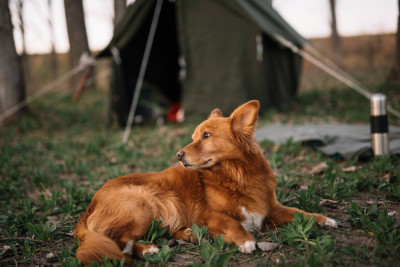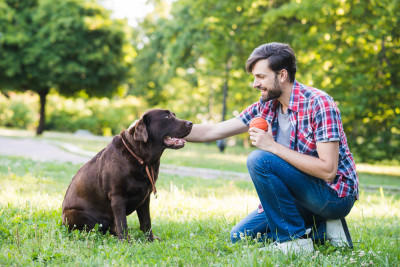1. Preparation is Key
Before embarking on a hiking or camping trip with your dog, thorough preparation is essential:
-
Check Regulations: Research the specific regulations and rules for dogs in the area you plan to visit. Some trails and campgrounds may have leash requirements or restrictions on dog access.
-
Health Check: Ensure your dog is in good health and up-to-date on vaccinations. Consult your veterinarian to confirm your dog is fit for outdoor activities.
-
Identification: Make sure your dog has proper identification, including a collar with an ID tag and a microchip with updated contact information.
2. Gear Essentials
Packing the right gear is crucial for a successful adventure:
-
Leash and Harness: Even if the trail allows off-leash hiking, it's a good idea to have a leash and harness handy for safety and control in unfamiliar situations.
-
Collapsible Water Bowl: Hydration is essential for both you and your dog. Bring a portable water bowl and fresh water for your dog.
-
Dog Backpack: Consider having your dog carry some of their supplies in a doggy backpack. This can help distribute weight and give them a sense of purpose.
-
Dog-Friendly First Aid Kit: Include items like bandages, antiseptic wipes, and any necessary medications your dog may need.
-
Food and Treats: Pack enough dog food for the duration of your trip and some extra in case of delays. Bring treats to reward good behavior.
3. Training and Commands
Ensure your dog is well-trained and responsive to basic commands like "sit," "stay," "come," and "leave it." This will help you maintain control in potentially challenging situations and keep your dog safe.
4. Leave No Trace
Practice Leave No Trace principles, which include packing out all waste, including your dog's waste. Use biodegradable waste bags and dispose of them properly.
5. Respect Wildlife
Keep your dog under control to prevent them from chasing or disturbing wildlife. Many animals may perceive dogs as a threat and react defensively.
6. Check Weather Conditions
Check the weather forecast before your trip. Extreme temperatures, whether hot or cold, can be dangerous for your dog. Be prepared with appropriate gear for the weather.
7. Rest Stops
Take regular breaks during your hike to allow your dog to rest, drink water, and cool down. Look out for signs of fatigue or overheating.
8. Campsite Etiquette
At the campsite, set up a designated area for your dog. Use a portable dog stake or leash to keep them secure while allowing them some freedom. Respect quiet hours to minimize disturbances for fellow campers.
9. Wildlife and Pest Protection
Protect your dog from potential encounters with wildlife or pests. Use tick and flea prevention, and be aware of any dangerous plants or animals in the area.
10. Clean Up
Clean up after your dog at the campsite and on the trail. Leaving a clean environment ensures that future adventurers can enjoy the same experience.
Conclusion
Hiking and camping with your dog can be an incredible adventure that strengthens your bond and allows you both to enjoy the beauty of the outdoors. By preparing thoroughly, having the right gear, and practicing responsible and respectful outdoor ethics, you can ensure safe and memorable adventures with your four-legged companion. Always prioritize your dog's safety, comfort, and well-being while enjoying the great outdoors together.







